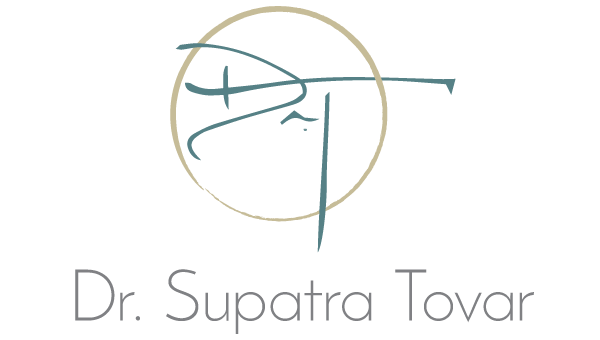Read Full Article Here

There’s no denying it: Pilates is everywhere. Whether you’re scrolling through Instagram and TikTok or chatting with a fitness friend, chances are, Pilates has made an appearance. It makes sense, considering the rise in low-impact workouts lately (as opposed to high-intensity bootcamp classes). Pilates was the No. 1 booked class on ClassPass in 2024.
But why has Pilates gotten so popular? Is the exercise method actually better than others — or are we all just hopping on the reformer? We chatted with clinical psychologist and certified Pilates instructor Supatra Tovar, PsyD, to find out.
Experts in This Article
Supatra Tovar, PsyD, is a clinical psychologist and certified Pilates instructor.
So, Why Is Everyone Obsessed With Pilates?
Pilates Offers Unique Benefits
Pilates stands out because it bridges the gap between your mind and your body, according to Dr. Tovar. “Unlike traditional weightlifting — which focuses on raw strength — or cardiovascular activities like running and cycling that emphasize endurance and heart health, Pilates provides a balanced approach that enhances both physical and mental well-being,” she says.
In fact, a 2019 study in PeerJ found that Pilates may be even more effective than resistance training when it comes to improving overall strength, core stability, and mobility — all while being easy on your joints.
Here are a few more major perks of Pilates, according to Dr. Tovar:
- More core strength and stability
- Improved muscular endurance
- A low-impact activity
- Better flexibility
- Better balance
- Improved range of motion
- Injury prevention
- More mental clarity and emotional well-being
- Better concentration
It’s Accessible
One of Pilates’ greatest strengths is its adaptability, according to Dr. Tovar. “Whether you’re a beginner or an experienced athlete, Pilates exercises can be modified to suit your individual needs,” she says. “This inclusivity makes it accessible to a wide audience, from those rehabilitating an injury to seasoned fitness enthusiasts seeking a balanced workout.
Plus, with virtual classes and online platforms, Pilates is accessible from anywhere. “This trend not only democratizes access but also ensures that Pilates can be seamlessly integrated into modern, busy lifestyles,” Dr. Tovar says.
There’s Social Media and Celebrity Influence
From Lady Gaga to Jennifer Aniston to Cristiano Ronaldo, tons of A-listers swear by Pilates for getting fit. “Celebrity endorsements and personal testimonials further amplify Pilates’ reach, encouraging more people to try it out,” Dr. Tovar says.
Not to mention, in today’s digital age, “visually engaging and transformative exercise modalities quickly capture public interest,” Dr. Tovar says. “Platforms like Instagram and TikTok have showcased the elegant, fluid movements of Pilates, making it both a fitness trend and a lifestyle statement.” Think about it: When you constantly see the same workout pop up on social media, you’re going to want to give it a try.
It Actually Feels Good
You can’t deny how great you feel after a Pilates class. And Dr. Tovar agrees. “Many of my clients share how invigorated and centered they feel after a session,” she says. “This intrinsic reward — feeling stronger, more balanced, and mentally refreshed — is a powerful driver of its popularity. The positive, almost therapeutic effect of Pilates ensures that those who try it are likely to keep coming back.”
Where Does Pilates Go From Here?
Looking ahead to the future, Dr. Tovar anticipates that Pilates will continue to be just as popular. “Its unique combination of strength training, flexibility, and mental centering offers benefits that are hard to replicate with any single other exercise modality,” she says.
While new fitness trends will continue to emerge, Pilates offers a foundation that complements other forms of exercise. “Rather than being replaced, it’s more likely to be integrated into broader fitness programs, reinforcing its value as a holistic practice,” Dr. Tovar says.
For instance, the demand for low-impact exercises that focus on strength, balance, and flexibility is growing — especially with an aging population. “Pilates meets these needs exceptionally well, supporting long-term health and independence,” Dr. Tovar says. “This practical, longevity-focused approach will likely secure its place in the fitness routines of many for years to come.”
The bottom line? Pilates’ combination of mindful movement with improved strength and flexibility will have appeal for years to come. “Whether you’re looking for physical strength, mental calm, or simply a workout that leaves you feeling balanced and energized, Pilates delivers a comprehensive approach that supports overall well-being,” Dr. Tovar says.
Danielle Zickl is a freelance writer who has 10 years of experience covering fitness, health, and nutrition. She received a BA in writing from Ithaca College. You can find her work here on PS and in many other publications, including Self, Well+Good, Runner’s World, Outside Run, Peloton, Women’s Health, and Men’s Fitness.

Recent Comments